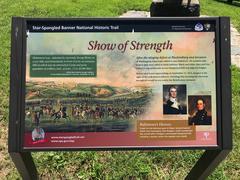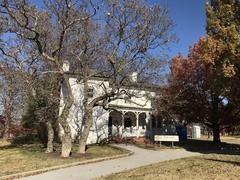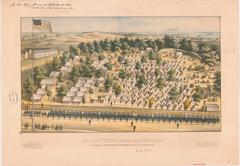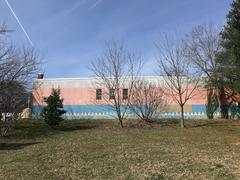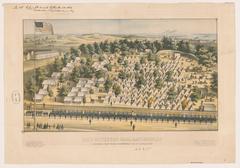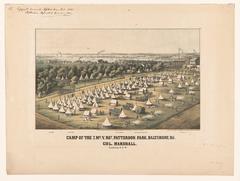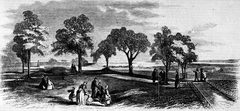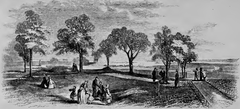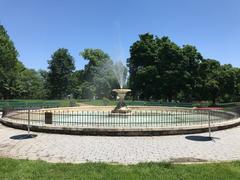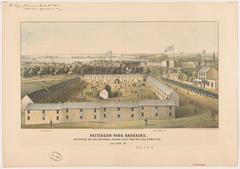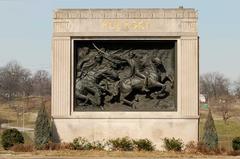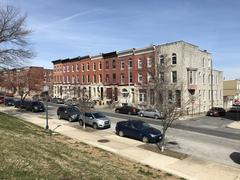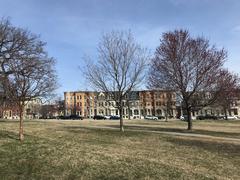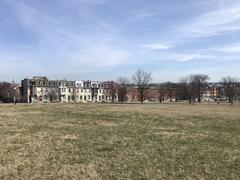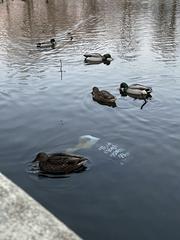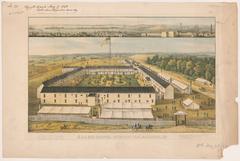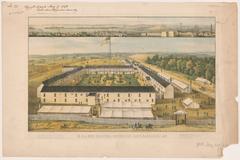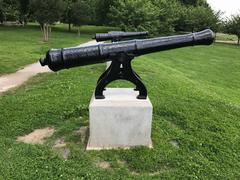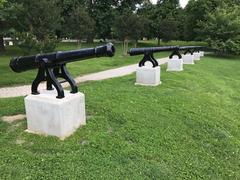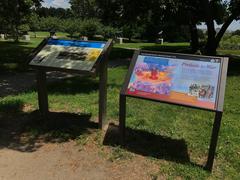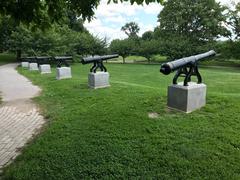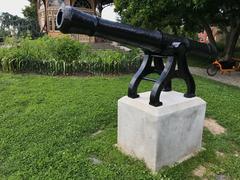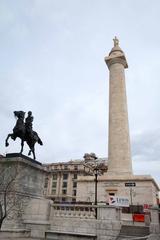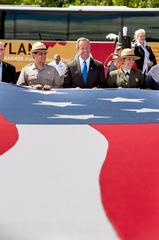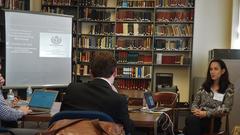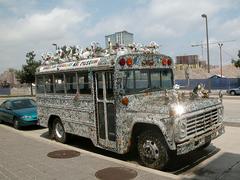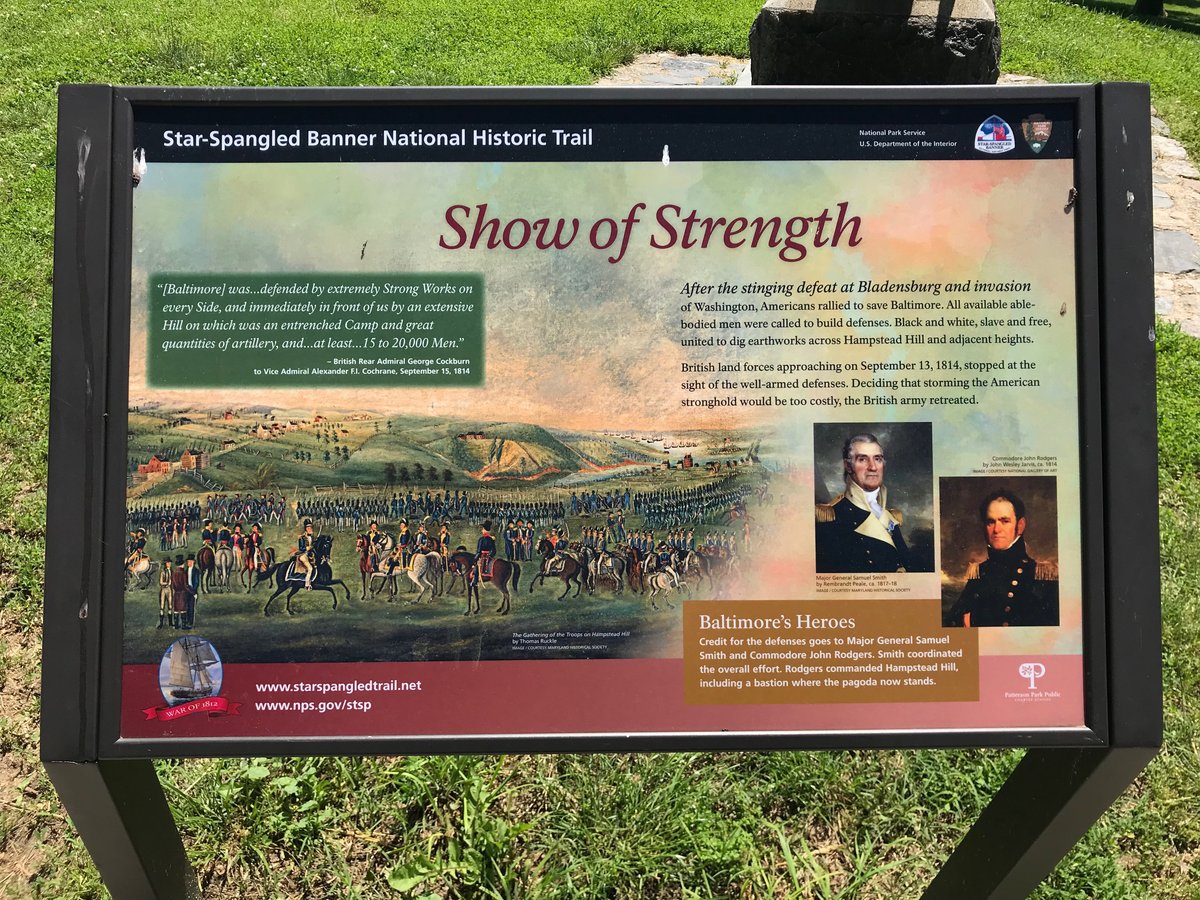
Comprehensive Guide to Visiting Patterson Park, Baltimore, United States
Publication Date: 18/08/2024
Introduction to Patterson Park
Nestled in the heart of Baltimore, Patterson Park stands as a testament to the city’s rich history and vibrant community life. Established in 1827, this iconic urban oasis offers a blend of historical significance, cultural diversity, and recreational amenities that attract both locals and tourists alike. The park’s origins trace back to William Patterson, an Irish immigrant and entrepreneur, who donated six acres of land to Baltimore Town for use as a ‘public walk’ (Baltimore Heritage). Over the years, Patterson Park has expanded to encompass 137 acres, making it one of Baltimore’s largest and most intensively used parks (Wikipedia).
Patterson Park’s historical significance is deeply intertwined with its role in key events such as the War of 1812 and the Civil War. The high ground at Hampstead Hill served as a crucial defensive position during the Battle of Baltimore, and later, the park provided medical care for Union troops during the Civil War (Baltimore City Parks). These historical moments are commemorated through various landmarks and architectural features, including the iconic Pagoda, a three-story observatory designed in 1891 (DC Travel Mag).
Today, Patterson Park is not just a historical site; it is a community hub that hosts numerous events and activities, fostering a sense of belonging and shared heritage among Baltimore’s diverse population. From the Lantern Parade and Summer Concert Series to the recreational facilities like tennis courts, an ice rink, and a boat lake, the park offers something for everyone (DC Travel Mag). Whether you’re interested in history, nature, or community events, Patterson Park provides a multifaceted experience that is both educational and enjoyable.
Table of Contents
- Introduction
- History of Patterson Park
- Visitor Information
- Special Events and Guided Tours
- Photographic Spots
- FAQ
- Conclusion
History of Patterson Park
Early Beginnings and Land Acquisition
Patterson Park, one of Baltimore’s oldest parks, has a rich history that dates back over 300 years. The first known resident of the area was Quinton Parker in 1669. At that time, it was possible to navigate a small boat up Harris Creek from the Patapsco River right into what is now Patterson Park (Patterson Park History & Nature). In 1708, the land was conveyed to Nicholas Rogers, and in 1792, William Patterson purchased the 200-acre Harris Creek Rogers estate at auction for $8,500.
Donation and Establishment as a Public Park
On January 24, 1827, William Patterson wrote to Mayor Jacob Small offering to donate the land to the city to create a public walk, inspired by his travels in Europe (Baltimore Heritage). Just a few weeks later, on March 1, the Baltimore City Council passed a resolution accepting the donation and preserving the first six acres of what would become Patterson Park. This donation marked the beginning of Baltimore’s first public park.
Expansion and Development
The park saw several expansions over the years. In 1850, the city purchased another 29 acres from Patterson’s heirs and hired a Keeper to improve and maintain the grounds (Baltimore City Parks). By 1873, Baltimore City annexed another 56 acres to add to the park, with further additions made in 1893 and 1910. Today, Patterson Park spans 137 acres (Wikipedia).
Role in the War of 1812
Patterson Park played a significant role during the War of 1812. In 1814, as British troops burned Washington, D.C., and bombarded Fort McHenry, 100 cannons and 12,000 American soldiers occupied the land that is now Patterson Park to repel an anticipated invasion by British troops (Baltimore City Parks). The strategic location of the park on Hampstead Hill provided a fine view of the harbor, making it a crucial defensive position.
Civil War Era
During the Civil War, Patterson Park served as a surgical hospital for Union troops. The hospital, known as Camp Washburn, was located just north of Lombard Street and Patterson Park Avenue. In 1864, the hospital and military buildings were demolished as the camp was disbanded (Baltimore City Parks).
Architectural and Cultural Significance
Patterson Park is home to several notable architectural features. The most iconic is the Pagoda, a three-story observatory designed by Charles H. Latrobe in 1891. The Pagoda commemorates the thousands of people who came together at Hampstead Hill during the War of 1812’s Battle of Baltimore (DC Travel Mag). Other architectural styles in the park include Italian Villa, Gothic Revival, Exotic Revival, and Romanesque Revival, designed to create an eclectic scene that would free visitors from the stresses of urban life (Baltimore City Parks).
Desegregation and Modern Use
Several public accommodations at the park, such as swimming pools, picnic pavilions, and playgrounds, were managed as ‘separate but equal’ until they were desegregated in 1956 (Wikipedia). Today, Patterson Park is included in the Baltimore National Heritage Area and remains one of the city’s most intensively used large parks.
Community Involvement and Events
The Friends of Patterson Park is an active community group that supports the park through fundraising, work and clean-up projects, and advocacy of the Patterson Park master plan, completed in 1998 (Baltimore City Parks). The park hosts several annual events, including the Lantern Parade in October, Barctober Fest, and a Summer Concert Series (DC Travel Mag).
Recreational and Historical Amenities
Patterson Park offers a variety of recreational amenities, including tennis courts, basketball courts, an ice rink, and a boat lake. The park also features historic battle sites, a lake, playgrounds, athletic fields, and the Instagram-worthy Patterson Park Observatory (Baltimore.org). The Marble Fountain, designed in 1865 by George A. Frederick, continues to be a space for the community to gather and socialize (DC Travel Mag).
Visitor Information
Visiting Hours and Tickets
Patterson Park is open daily from dawn until dusk, and admission is free. However, certain amenities, like the Pagoda and ice rink, may have specific operating hours and fees. For current information, it is recommended to visit the official Patterson Park website.
Travel Tips and Nearby Attractions
Patterson Park is easily accessible by car, public transportation, and bike. Parking is available around the park’s perimeter. Nearby attractions include the Baltimore Aquarium, Fells Point, and the Maryland Science Center, offering visitors a variety of activities in close proximity.
Accessibility
The park is wheelchair accessible, with paved paths and ramps available. Restrooms are accessible as well, ensuring a comfortable visit for all.
Special Events and Guided Tours
Patterson Park hosts several special events throughout the year, such as the Lantern Parade, Barctober Fest, and a Summer Concert Series. Guided tours focusing on the park’s history and natural features are also available.
Photographic Spots
For photography enthusiasts, the Pagoda, Marble Fountain, and scenic views from Hampstead Hill offer excellent photo opportunities. Seasonal changes bring various flora and fauna, enhancing the beauty of the park throughout the year.
FAQ
Q: What are the visiting hours for Patterson Park?
A: Patterson Park is open daily from dawn until dusk.
Q: Is there an admission fee for Patterson Park?
A: No, admission to Patterson Park is free, although certain amenities may have fees.
Q: Are guided tours available at Patterson Park?
A: Yes, guided tours that focus on the park’s history and natural features are available.
Q: Is Patterson Park accessible for visitors with disabilities?
A: Yes, the park has paved paths, ramps, and accessible restrooms.
Conclusion
Patterson Park’s rich history and diverse amenities make it a vital part of Baltimore’s cultural and recreational landscape. From its early beginnings as a strategic military site to its current role as a community hub, the park continues to be a cherished space for both residents and visitors. For more information, download our mobile app, check out related posts, or follow us on social media.
References
- Patterson Park History & Nature (source url)
- Baltimore Heritage (source url)
- Baltimore City Parks (source url)
- Wikipedia (source url)
- DC Travel Mag (source url)
- Baltimore.org (source url)
- Stay Happening (source url)
- Sunshine Whispers (source url)
- Family Trip Guides (source url)
